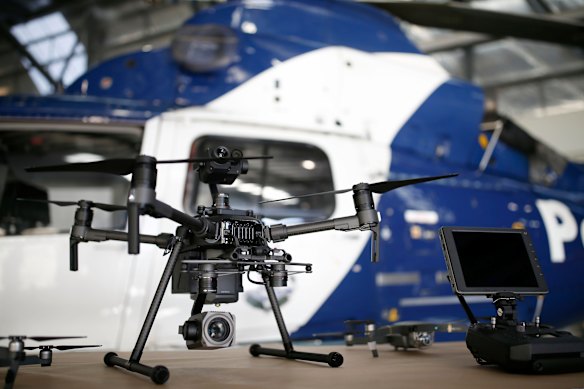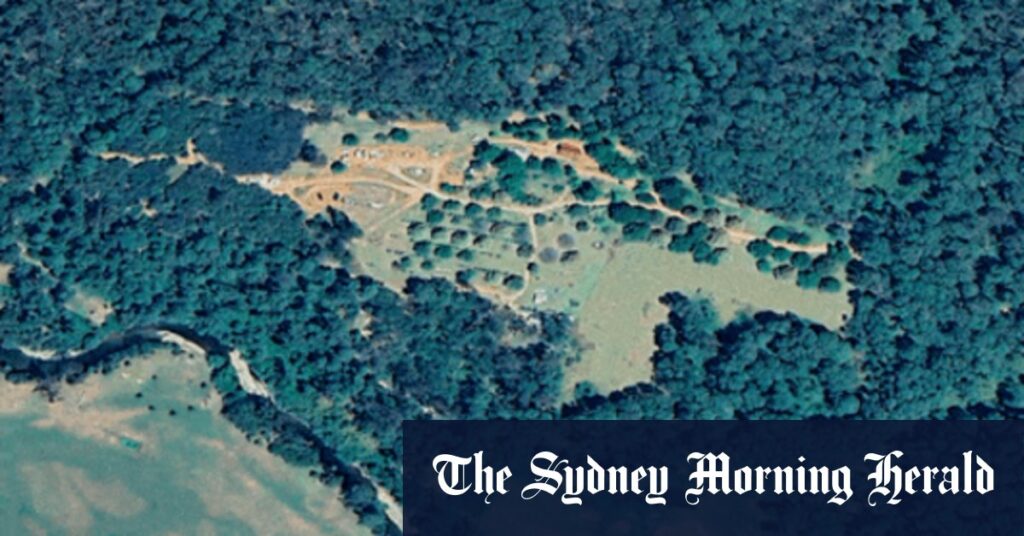Loading
A source with knowledge of police special operation tactics, speaking anonymously to protect relationships, said officers had to assume Freeman had prepared for the attack.
That could mean he had various camps within the forest, and had prepared further ambushes.
Instead of pushing into dense bushland, where Freeman would probably be able to detect them, they were likely to wait him out, the source said.
Freeman has allegedly already killed two police officers, and faces mandatory life in jail if convicted of those crimes, meaning he has nothing left to lose other than his life.
“It’s going to be a shootout at the O.K. Corral if you corner him,” the source said.
One of Victoria Police’s helicopters.Credit: Paul Rovere
Most of the search, the source said, is likely to take place from the air, with police using helicopters equipped with snipers and thermal cameras, and potentially drones.
Victoria Police also has a fixed-wing Beechcraft King Air350ER with thermal cameras available.
Thermal cameras can pick out the heat generated by a human body through layers of vegetation – even warm footprints left behind.
“It’s not really a challenge if you’ve got the right equipment,” said Michael Coates, operations manager at C-Astral Aerospace Search and Rescue.

A Victoria Police drone.Credit: Darrian Traynor
Helicopters and drones would move in a chessboard pattern through the search-zone, double-checking each area. They would slowly winnow down the large initial search area until Freeman was found.
Benfield said thermal cameras were not infallible and there were ways to avoid them.
Drones can be flown at a high altitude, where they would be harder for Freeman to spot and avoid than loud helicopters.
An area headquarters has been set up at a local winery. The police source said that intelligence specialists would work from there to sift through Freeman’s social media history as well as trying to interview his friends and family to find information to help catch him.
Loading
Once a likely location is found, police could deploy search and rescue specialists – skilled climbers who are equipped to move through rough conditions.
Special Operations Group officers equipped with rifles, flashbangs and tear gas could also be used for a direct assault on Freeman’s campsite.
It is not clear if Freeman was carrying supplies when he fled. If not, he will soon need to find food and water – opening a chance to detect him.
Expert bushman Malcolm Naden hid in NSW bushland for almost a decade before police finally caught the fugitive by following a string of regional burglaries and using hidden cameras to track him.
They could use a similar trick here, said Benfield, doorknocking locals to see if any food or water had gone missing, and then deploying motion-activated cameras.
“The general rule is four days without water, four weeks without food. So he’d be needing some water sources soon if he’s moving. I’d be looking at water holes, houses with water tanks, creeks,” said Benfield.
Former NSW Police hostage negotiator Vincent Hurley, who lectures in policing at Macquarie University, said a bush search on foot would be extremely difficult.
“The only thing they could do would be to do a grid search – so they would divide the map up into a manageable bite-size grid, it might be 100 metres by 100 metres, and they could just move from east to west or from north to south,” he said.
“It would be really physically draining on the police carrying equipment and food with them, which they will have to do, as well as whatever firearms they are carrying with them.
With Alex Darling
Read the full article here


